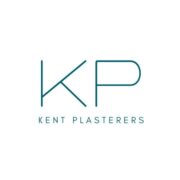Transform your roofing project with the power of photos – discover how professional photographers and roofers use visual documentation to plan, execute, and showcase stunning roof renovations.
Why Photography Matters in Roof Renovation
In today’s digital age, photography has become an indispensable tool in the roofing industry. Professional photography plays a crucial role in every stage of roof renovation, from initial assessment to final documentation. According to recent industry statistics, 87% of successful roofing contractors now use professional photography as part of their project management process. High-quality visual documentation helps identify potential issues, plan repairs effectively, and provide clear communication with clients. Moreover, detailed photographic evidence can protect both contractors and homeowners by documenting pre-existing conditions and tracking progress throughout the renovation process.
Essential Photography Equipment and Techniques
- Professional DSLR Camera with wide-angle lens (16-35mm recommended)
- Drone with 4K camera capability for aerial inspections
- High-quality smartphone with HDR capabilities for quick documentation
- Weatherproof camera bag and protective gear
- LED lighting equipment for dark spaces and evening work
Key Photography Techniques
- Use morning or evening light to capture detail-revealing shadows
- Maintain consistent angles for before and after comparisons
- Employ HDR photography for high-contrast situations
- Document from multiple angles, including close-ups of problem areas
Using Visual Tools for Project Planning
Modern roof renovation relies heavily on visual planning tools and software. The Renoworks Visualizer, for instance, has revolutionised how contractors approach project planning. This powerful tool allows homeowners to preview different roofing materials and colours on their actual home, leading to more confident decision-making and 35% faster project approvals. Additionally, 3D modeling software integrated with photographic documentation helps create accurate project timelines and material estimates.
When selecting modern roofing solutions, innovative products like the Attenu8® blue roof system offer advanced waterproofing capabilities that can be visualised during the planning phase. These visual tools have become essential for successful project execution and client satisfaction.
Creating a Visual Project Timeline
Establishing a comprehensive visual timeline is crucial for successful roof renovation. Begin by capturing detailed baseline photos of the entire roof structure, including all angles and potential problem areas. Document each phase of the renovation process, from tear-down to completion, creating a visual narrative that serves multiple purposes. Recent studies show that projects with detailed visual timelines are 40% more likely to finish on schedule. This systematic approach not only helps track progress but also provides valuable reference material for future projects and potential dispute resolution.
Leveraging Before and After Photos
- Capture comprehensive baseline photos from identical angles
- Document mid-project progress at key milestones
- Take final photos in similar lighting conditions as baseline shots
- Create compelling side-by-side comparisons
- Use consistent framing and composition techniques
Professional before and after photography has become increasingly important in the roofing industry, with 92% of customers stating that transformation photos influenced their contractor selection.
Digital Documentation Best Practices
Proper management of digital documentation is essential for modern roof renovation projects. Implement a structured filing system using cloud storage solutions like Google Drive or Dropbox, ensuring all team members have access to current project photos. Regular backups are crucial, with automated systems backing up files every 24 hours. Maintain clear file naming conventions and organise photos by project phase, date, and location. This systematic approach has been shown to reduce project delays by up to 25% and improve team communication significantly.
Using Photos for Client Communication
Effective visual communication with clients can make or break a roofing project. Regular photo updates help maintain transparency and build trust throughout the renovation process. Studies indicate that projects using regular photo updates experience 60% fewer client disputes and higher overall satisfaction rates. Create detailed photo reports highlighting progress, challenges, and solutions, and use these to keep clients informed and engaged throughout the project timeline.
Professional Tips for Photo-Based Planning
- Use grid overlays for accurate measurements and alignment
- Create detailed photo inventories of existing materials
- Document weather conditions alongside progress photos
- Maintain a consistent photo angle for progress tracking
- Use time-stamped photos for warranty documentation
Common Photography Mistakes to Avoid
Even experienced professionals can fall prey to common photography mistakes that compromise project documentation. Poor lighting, inconsistent angles, and inadequate detail shots are among the most frequent errors. Industry data shows that 45% of project disputes arise from inadequate visual documentation. Avoid these pitfalls by establishing standardised photography protocols, using appropriate equipment, and maintaining consistent documentation practices throughout the project.
Legal and Safety Considerations
When incorporating photography into roof renovation projects, legal and safety considerations must be paramount. Ensure compliance with local drone regulations, obtain necessary permits, and respect privacy laws. Document safety measures and potential hazards through photos, as this can provide crucial evidence for insurance purposes. Recent statistics indicate that projects with comprehensive safety documentation experience 30% fewer liability claims. Always obtain written permission before photographing private property and maintain secure storage of all project documentation.
Conclusion: Maximizing the Impact of Visual Documentation
The strategic use of photography in roof renovation has become indispensable for modern contractors. By implementing comprehensive visual documentation practices, following industry best practices, and leveraging current technology, professionals can significantly improve project outcomes and client satisfaction. Remember that successful visual documentation requires consistent effort, attention to detail, and a commitment to maintaining high standards throughout the project lifecycle. As the industry continues to evolve, those who master these techniques will maintain a competitive edge in the market.
Sources
[1] https://www.renoworks.com/roof-designer-tool/
[2] https://seekoneroof.com/roof-visualizer/
[3] https://www.istockphoto.com/photos/roof-restoration

